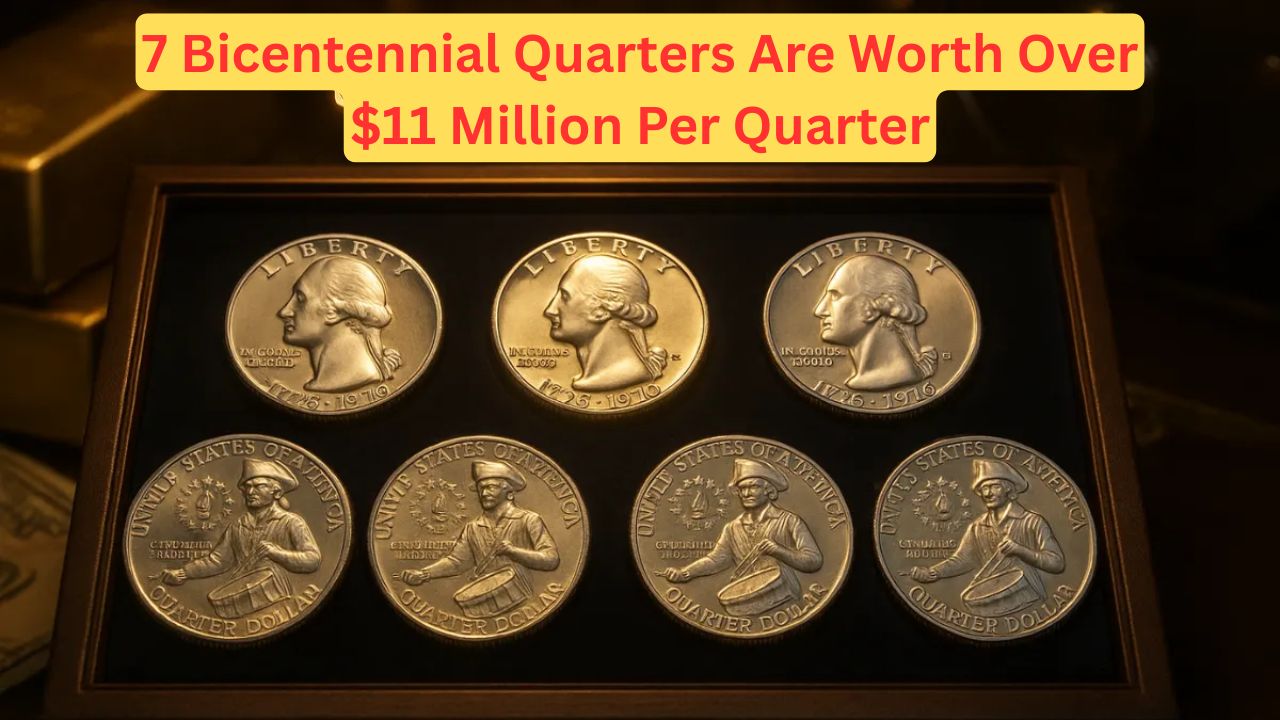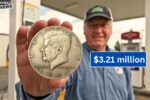Imagine finding a quarter in your pocket worth $11 million! The 1976 Bicentennial quarters, made to celebrate America’s 200th birthday, are common coins, but rumors claim seven ultra-rare versions could each be valued at over $11 million and might still be in circulation. While no quarter has sold for that much, certain errors or unique features can make these coins worth thousands or even millions. Here’s what to know about these seven rare quarters and how to spot them.
The Bicentennial Quarter Basics
The U.S. Mint produced over 1.6 billion Bicentennial quarters in 1975 and 1976, marked with a “1776-1976” date and a drummer boy on the back. Most are clad (copper and nickel), but some from San Francisco (S mint mark) are 40% silver, which boosts their value. Minted in Philadelphia (no mark), Denver (D), and San Francisco, these coins are everywhere, but rare errors like doubled dies or wrong metal strikes make some stand out as collector’s treasures.
The $11 Million Rumor
Talk of seven Bicentennial quarters worth $11 million each is likely exaggerated. No verified sales have reached this price. However, some have sold for big money, like a 1976-S silver proof quarter that fetched $19,200 in 2019 or a double denomination quarter struck on a dime that sold for $9,200 in 2020. The $11 million figure may come from unverified stories or confusion with other coins, but rare errors could still make a quarter worth millions.
Seven Rare Features to Check
These seven traits could make a Bicentennial quarter valuable:
- Doubled Die Obverse: Blurry or doubled lettering on the front, like “LIBERTY.”
- Mule Error: Mismatched front and back designs, like a quarter struck on a dime.
- 40% Silver No Mint Mark: Silver coin without a mint mark, very rare.
- Off-Center Strike: Design shifted off-center, leaving part of the coin blank.
- Proof in Circulation: Shiny, mirror-like finish not meant for everyday use.
- Die Crack: Unusual lines or cracks in the design from a damaged mint die.
- High Grade MS-70: Perfect condition, graded by PCGS or NGC.Use a magnifying glass to check the date, mint mark, and drummer boy design. Don’t clean the coin—cleaning lowers its value.
Where to Find These Coins
These rare quarters could be in your change, coin jar, or an old piggy bank. Check bank rolls, vending machines, or inherited collections. With over 809 million minted in Philadelphia and 860 million in Denver, finding one of these seven rarities is tough but possible. If you spot a potential gem, take it to a trusted coin dealer or grading service like PCGS for appraisal. Auctions are the best way to sell a valuable coin.
Why Collectors Love Them
As America nears its 250th anniversary in 2026, Bicentennial quarters are hot among collectors. Their drummer boy design and historical significance make them special. Rare errors and silver versions are prized for their scarcity. Even if the $11 million price is a myth, finding one of these seven rare quarters could still bring thousands or millions, making the hunt exciting for collectors and casual hunters alike.
| Feature | Details | Potential Value |
|---|---|---|
| Doubled Die Obverse | Blurry or doubled lettering on front | $8,400–$45 million |
| Mule Error | Mismatched front/back designs | Up to $9,200 |
| Silver No Mint Mark | 40% silver, no mint mark | $1,000–$50,000 |
| Off-Center Strike | Design not centered | $500–$10,000 |
| Proof in Circulation | Shiny, mirror-like finish | $100–$6,038 |
| Die Crack | Unusual lines or marks | $500–$5,000 |
| MS-70 Grade | Perfect condition | $19,200–$45 million |
Don’t overlook your loose change! While a $11 million quarter may be a tall tale, one of these seven rare Bicentennial quarters could still make you rich. Grab a magnifying glass and start hunting today!




